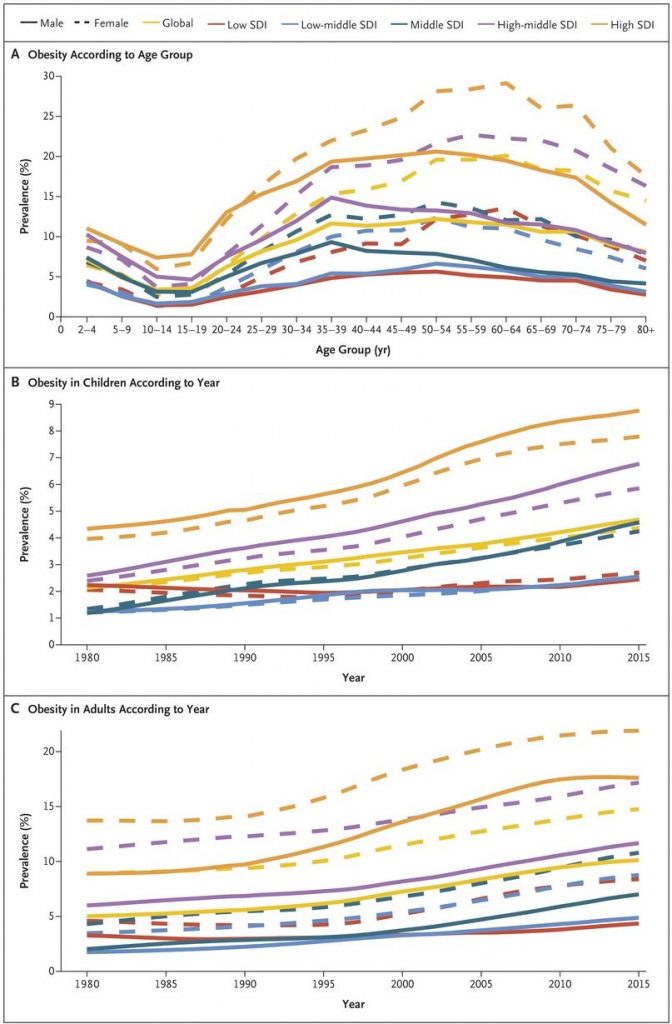The Obesity Epidemic
In 2020, obesity is a global health crisis. Across the world, over 1 billion adults suffer from obesity and of these 1 billion, 300 million are clinically obese (1). In fact, obesity is the second leading cause of preventable death in the United States, accounting for one in five deaths between adults ages 40 to 85 (2).

In the map above, the prevalence of self-reported obesity in the United States is observed. Charted through 2017 to 2018, the Center for Disease Control (CDC) reports that obesity had a prevalence of 42.4% (3).
Obesity is a disease that does not discriminate. According to the graph below from The New England Journal of Medicine, it is observed that regardless of sex or sociodemographic index (SDI), obesity prevalence has been on a rapid climb since 1980 (4).

Even more concerning, obesity can lead to a myriad of other health issues, such as “type 2 diabetes, cardiovascular disease, hypertension and stroke and certain forms of cancer.” These problems will becoming increasingly more prevalent as we examine the Childhood Obesity Epidemic, especially considering that worldwide, more than 17.6 million children under 5 years old are already overweight (1).
A major complexity of obesity is how little scientists know about its pathways. What is known is that there is no one molecular relationship that drives obesity. For example, the Inflammatory Signaling Pathway is one way in which cells react to receiving an excess of nutrients caused by overeating (10). However, there are multiple molecular events within this pathway that could all contribute individually to obesity such as insulin sensitivity, leptin concentration and adipose size, adiponectin concentration, as well as NF-kB signaling, which is our main focus here.
Recent Comments